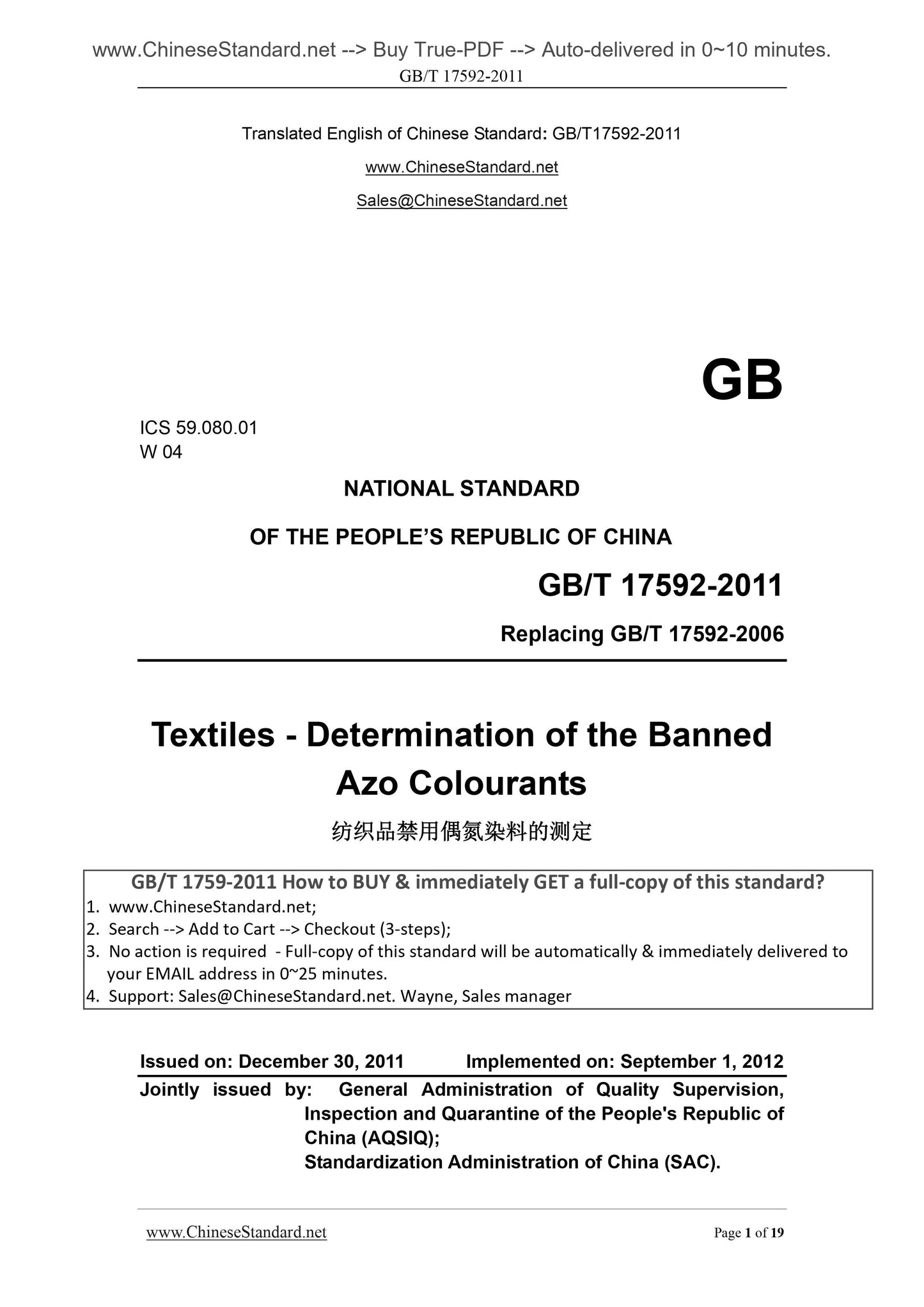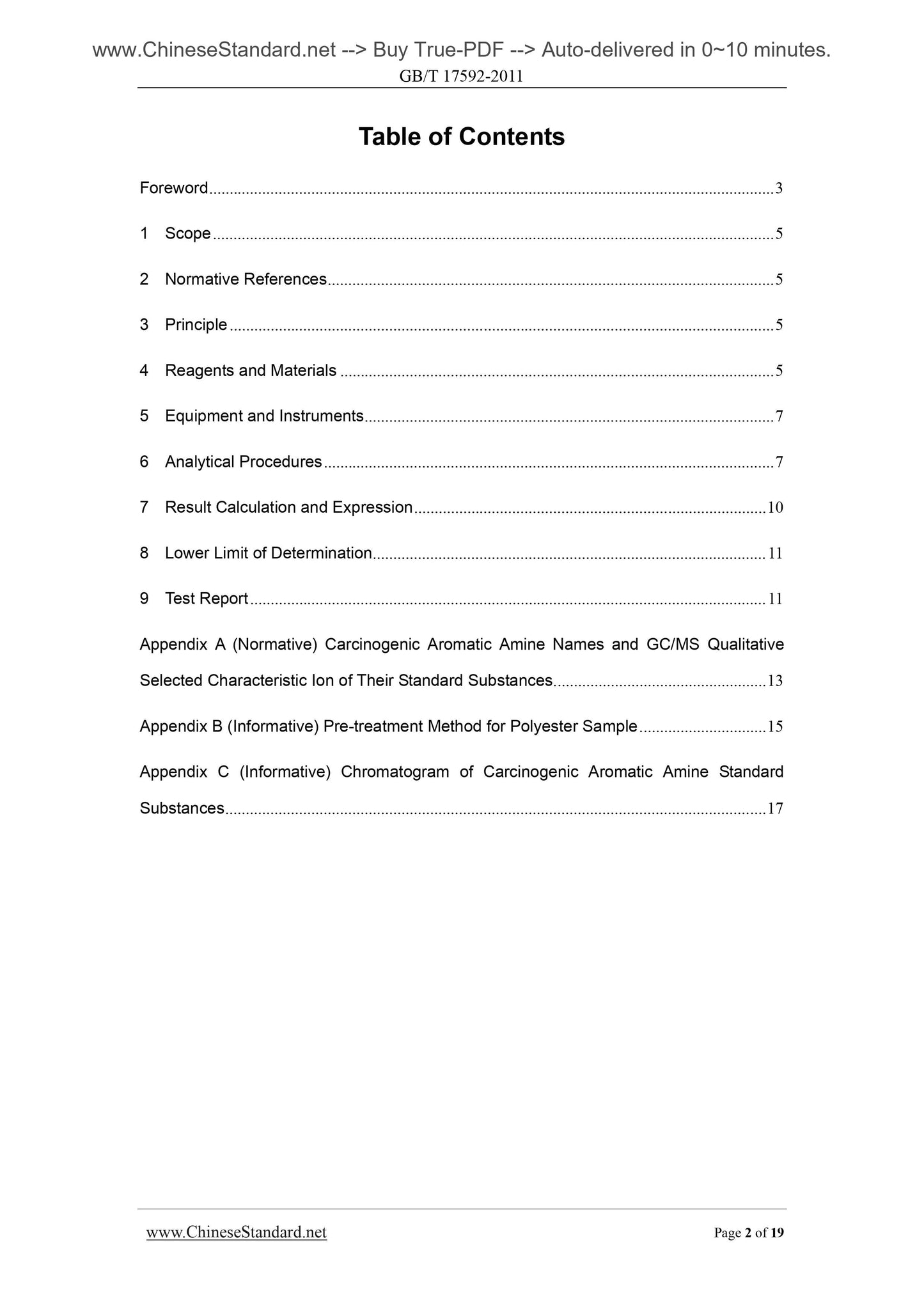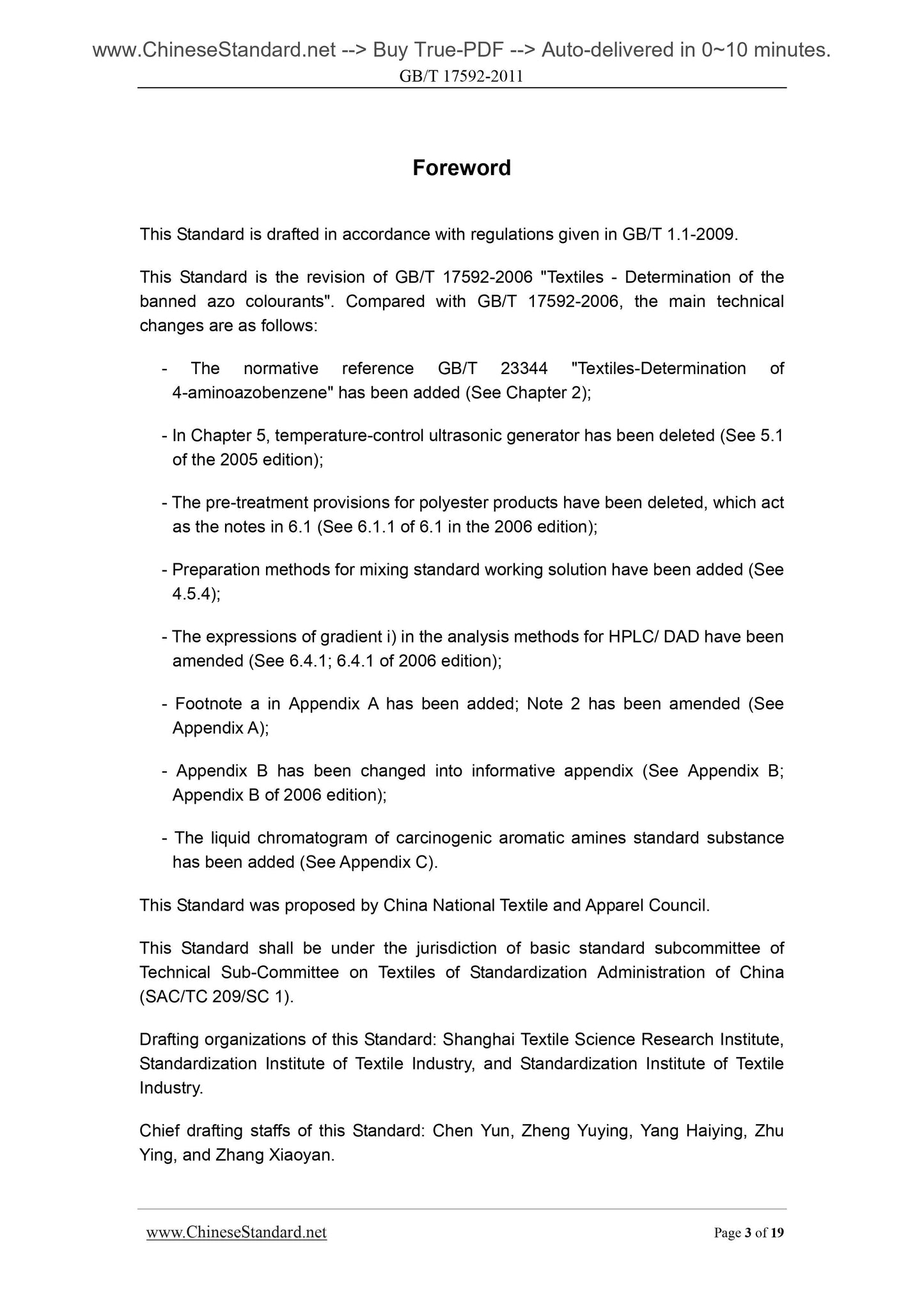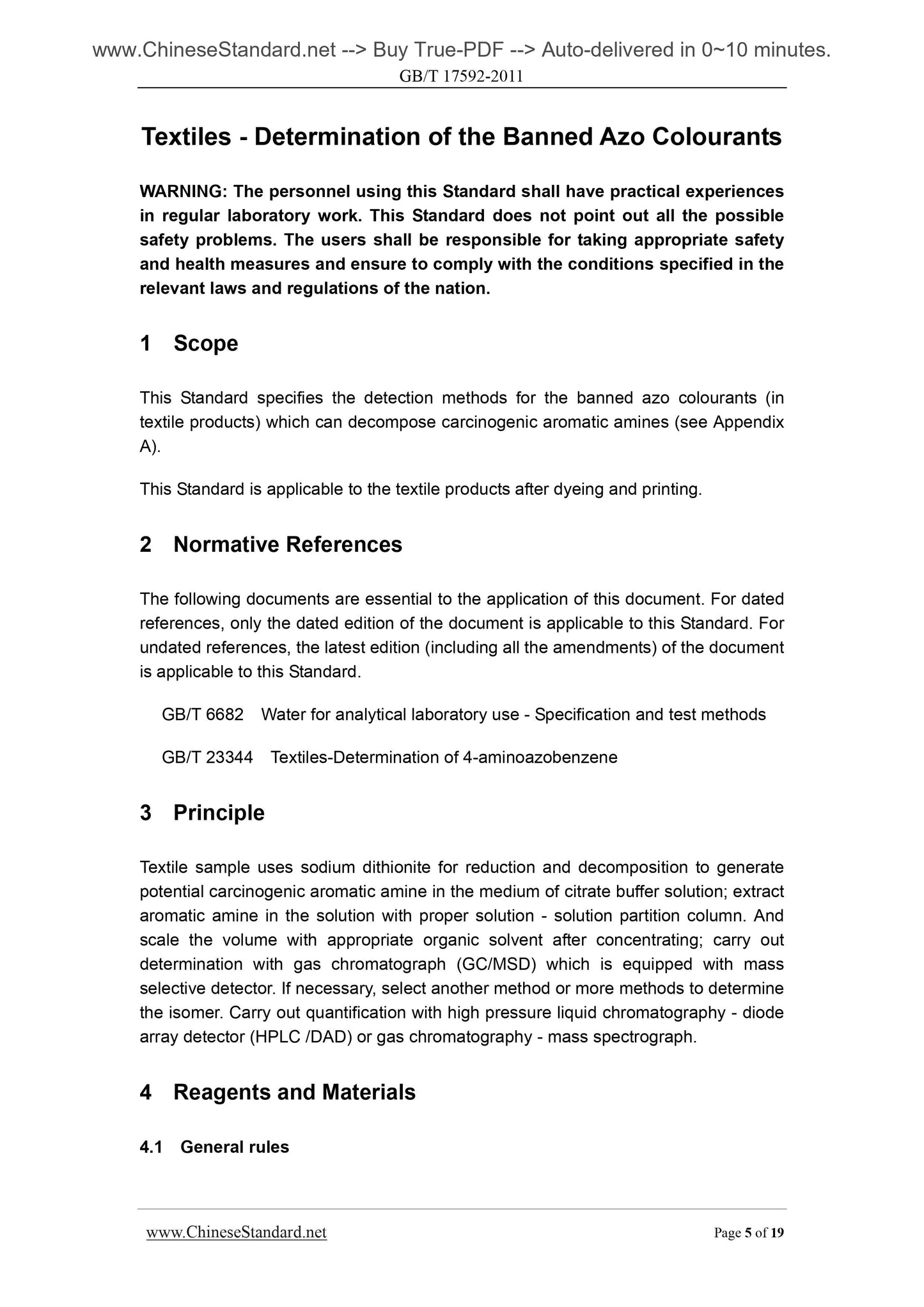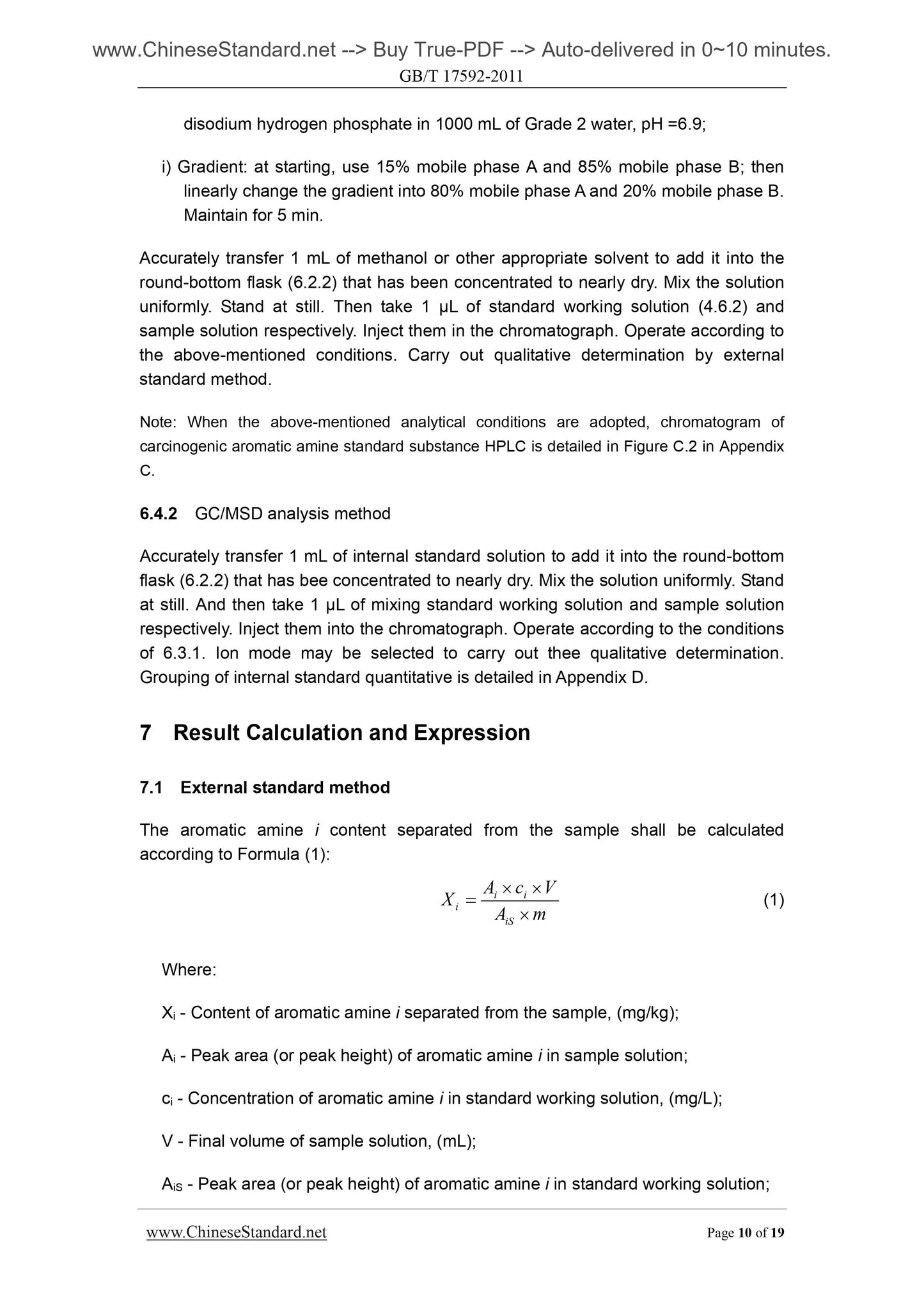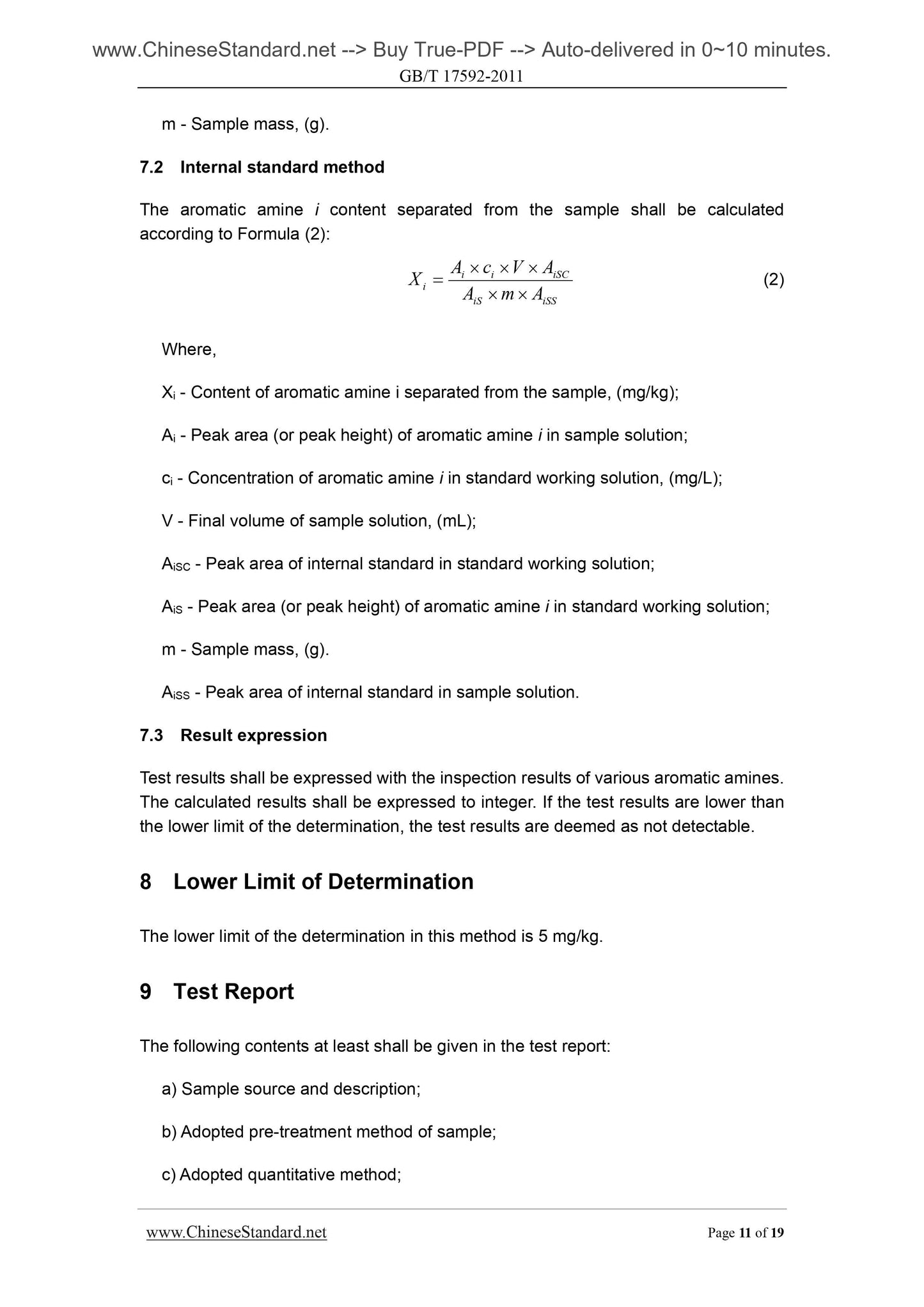1
/
of
6
PayPal, credit cards. Download editable-PDF and invoice in 1 second!
GB/T 17592-2011 English PDF (GB/T17592-2011)
GB/T 17592-2011 English PDF (GB/T17592-2011)
Regular price
$85.00
Regular price
Sale price
$85.00
Unit price
/
per
Shipping calculated at checkout.
Couldn't load pickup availability
GB/T 17592-2011: Textiles -- Determination of the banned azo colorant
Delivery: 9 seconds. Download (and Email) true-PDF + Invoice.Get Quotation: Click GB/T 17592-2011 (Self-service in 1-minute)
Newer / historical versions: GB/T 17592-2011
Preview True-PDF
Scope
This Standard specifies the detection methods for the banned azo colourants (intextile products) which can decompose carcinogenic aromatic amines (see Appendix
A).
This Standard is applicable to the textile products after dyeing and printing.
Basic Data
| Standard ID | GB/T 17592-2011 (GB/T17592-2011) |
| Description (Translated English) | Textiles -- Determination of the banned azo colorant |
| Sector / Industry | National Standard (Recommended) |
| Classification of Chinese Standard | W04 |
| Classification of International Standard | 59.080.01 |
| Word Count Estimation | 14,161 |
| Date of Issue | 2011-12-30 |
| Date of Implementation | 2012-09-01 |
| Older Standard (superseded by this standard) | GB/T 17592-2006 |
| Quoted Standard | GB/T 6682; GB/T 23344 |
| Regulation (derived from) | Announcement of Newly Approved National Standards No. 23 of 2011 |
| Issuing agency(ies) | General Administration of Quality Supervision, Inspection and Quarantine of the People's Republic of China, Standardization Administration of the People's Republic of China |
| Summary | This standard specifies the textile products in biodegradable carcinogenic aromatic amines (see Appendix A), banned azo detection method. This standard applies to warp dyeing and processing of textile products. |
Share
